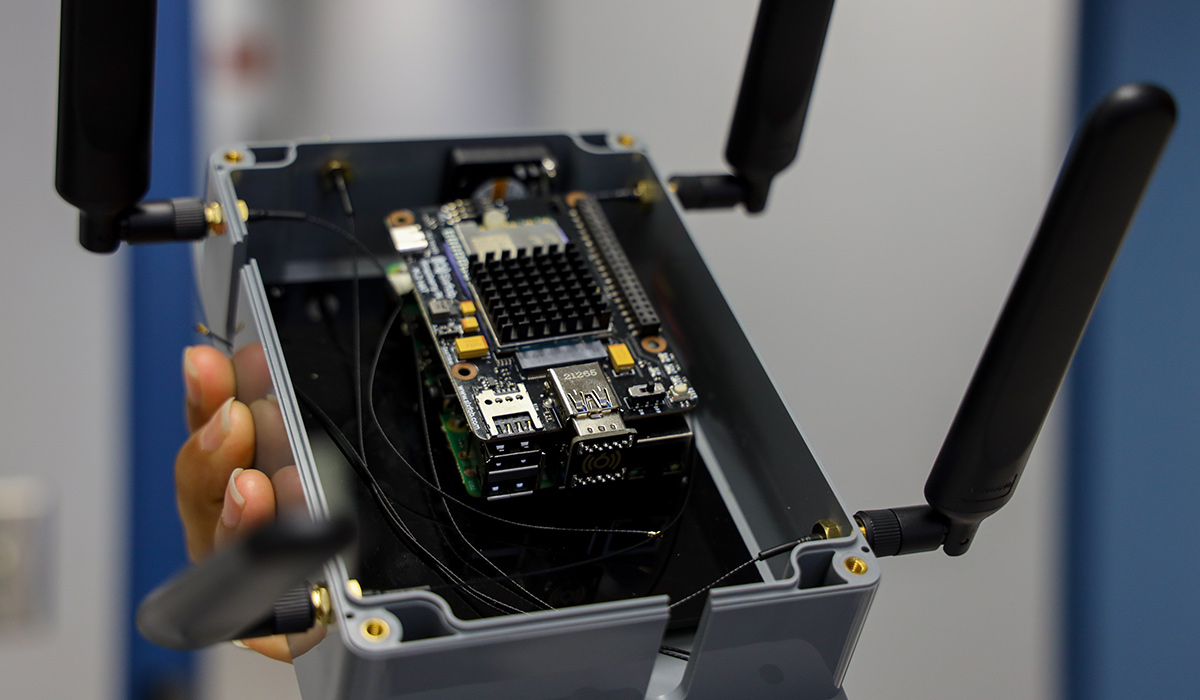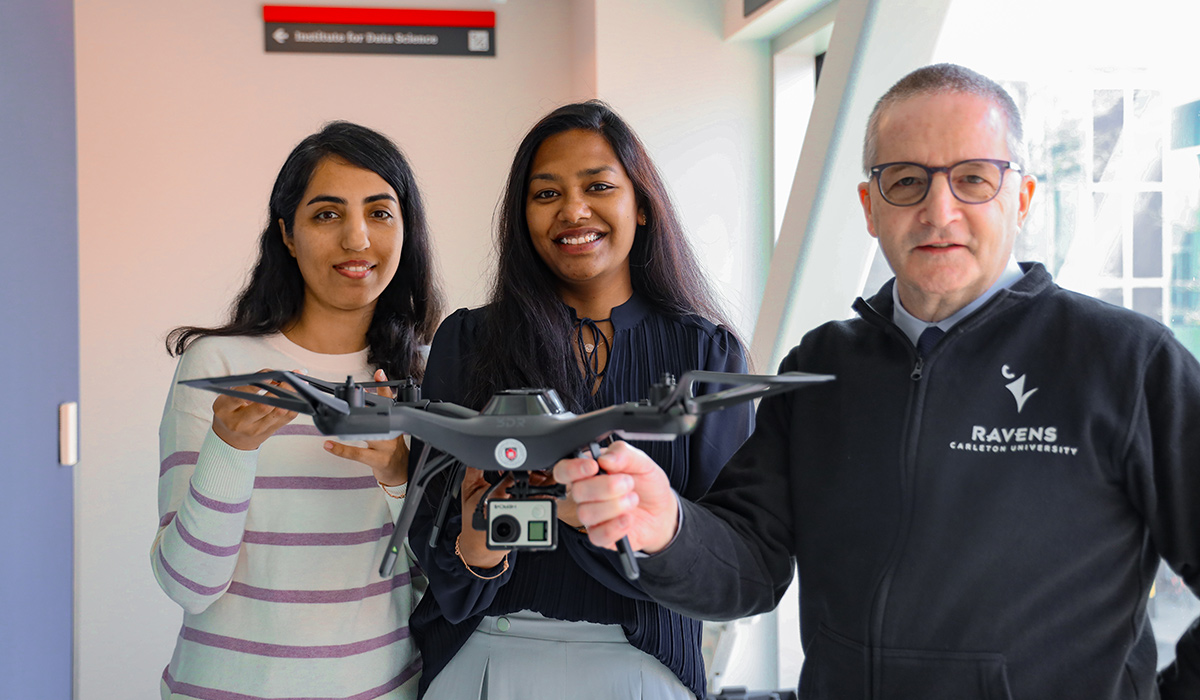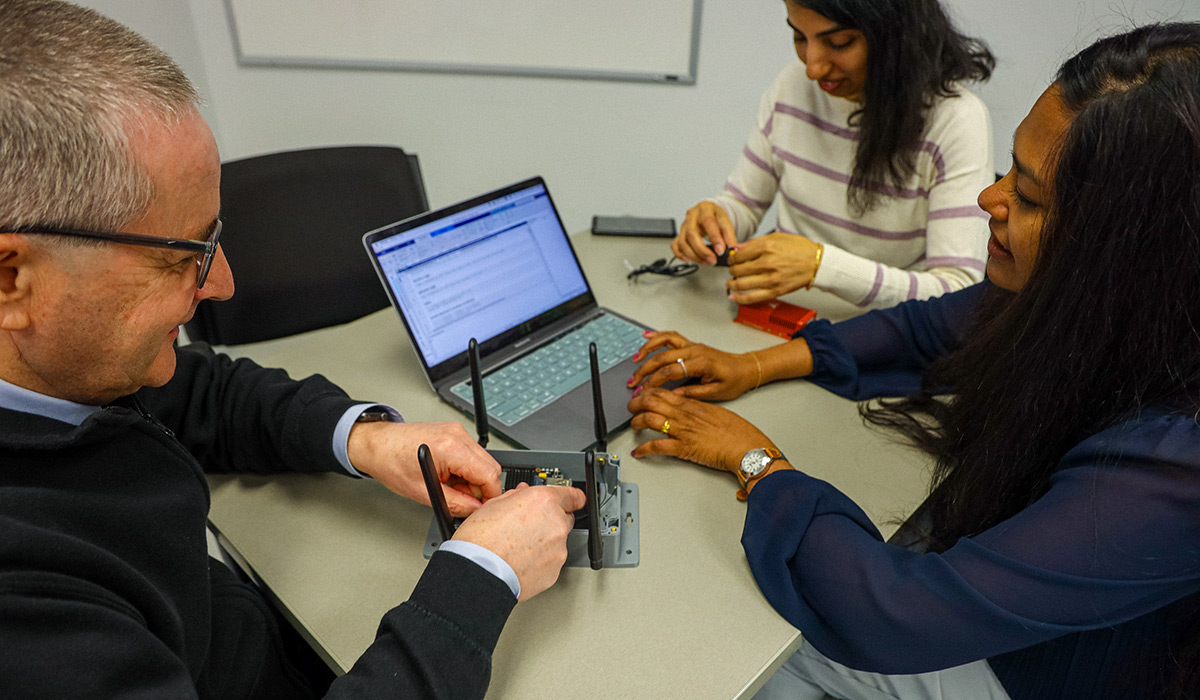A natural disaster that knocks out communication infrastructure, a remote search and rescue operation, or an investigation into the condition of an unstable building – these are just a few examples of challenging situations that could be aided by the use of civilian drones.
Uncrewed aerial vehicles (UAV) can quickly move into and through spaces that are dangerous or remote. These machines are becoming increasingly popular, with one industry report estimating the global commercial drone market will reach a value of $54 billion by 2030.
To date, the range of these drones has been limited by the operator’s direct line of sight. If the drone goes too far or an obstacle like a building or hill gets in the way, the signal is lost and the operator loses control. As a result, the distance of the drone’s flight can be restricted to just a few kilometres – significantly curtailing the drone’s theatre of operation.
To address this problem, Carleton University researcher Michel Barbeau and his team from the School of Computer Science are harnessing the power of 5G and the Internet of Things to revolutionize the control and range of drones.

“Traditionally, the reach of a drone was limited,” he says.
“Now, with 5G base station technology, it can be anywhere in the world.”
5G Offers New Possibilities for Drones
Barbeau’s research focuses on quadcopter drones, which are agile machines that can fly both horizontally and vertically.
“They can perform many kinds of tasks,” he says. “They can be used to deliver parcels or carry a camera. The machines can hover and stay in one location for a period of time.”
Part of the Ericsson-Carleton partnership to expand experiential learning and research in wireless communications, Barbeau’s project uses 5G technology to expand the range and operational possibilities of civilian drones.
As more drones take to the air and widespread drone-delivered parcels becomes a more realistic scenario, enhancing the operator’s control of UAVs is critical for ensuring public safety.
“With poor network quality, control of a drone could be lost,” says Barbeau.
“In that event, the drone could collide with buildings or vehicles, so losing control could be dangerous.”

The emergence of 5G is opening doors for long range networks as the near instantaneous speed of the bandwidth – known as low latency – allows for real-time control of the drones throughout the wireless network.
Base Station Web Expands Range
The drones are connected through a series of base stations, relaying signals across long distances.
“Before you lose coverage with one base station, it will hand over the communication to another base station – like regular cellular communications,” says Barbeau. “It’s similar to holding a conversation on your phone while travelling along a highway.”
The new drones themselves can act as a base station, further expanding the web of communication. The mobile nature of the drones and their ability to relay messages make the potential communication range almost limitless.
This base station network can have massive impacts when an event like a natural disaster knocks out existing communication networks, or when critical infrastructure – such as a bridge or pipeline – needs to be investigated for structural damage.
“With these drones, you can deploy a base station to cover an area very quickly.”
As drones become more popular, base stations can also support overloaded communications networks during surges in demand.

“A temporary base station can be added to the network to serve more users,” says Barbeau, noting that the machines are ideal for the urban environment where drone activity for parcel delivery may become the norm.
Global Signal Security with 5G
Beyond speed, 5G offers a high level of security – ensuring that the operator remains in control of the machine without disruption and no matter the location.
As the drones fly over great distances and relay information to users, the ability to maintain confidence in outgoing and incoming communication is essential.
“With 5G, we can guarantee the origin of the control messages, as well as the security of the data that is produced by the drone,” he says.
Secure sharing of data is critical as 5G expands the possibilities of how different machines can communicate using the Internet of Things.
“The previous goal with networks was mainly to provide mobile communications to people,” says Barbeau. “5G connects not only people, but also things such as drones and sensors.”
